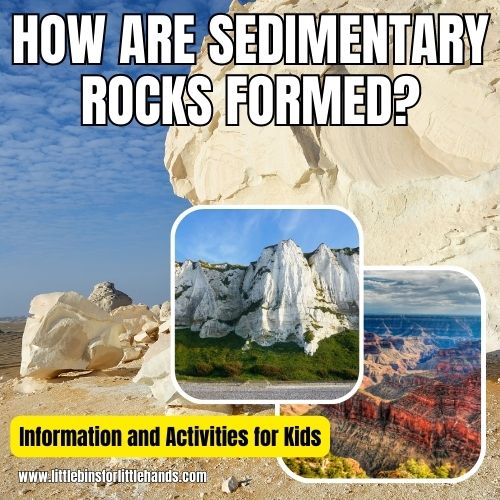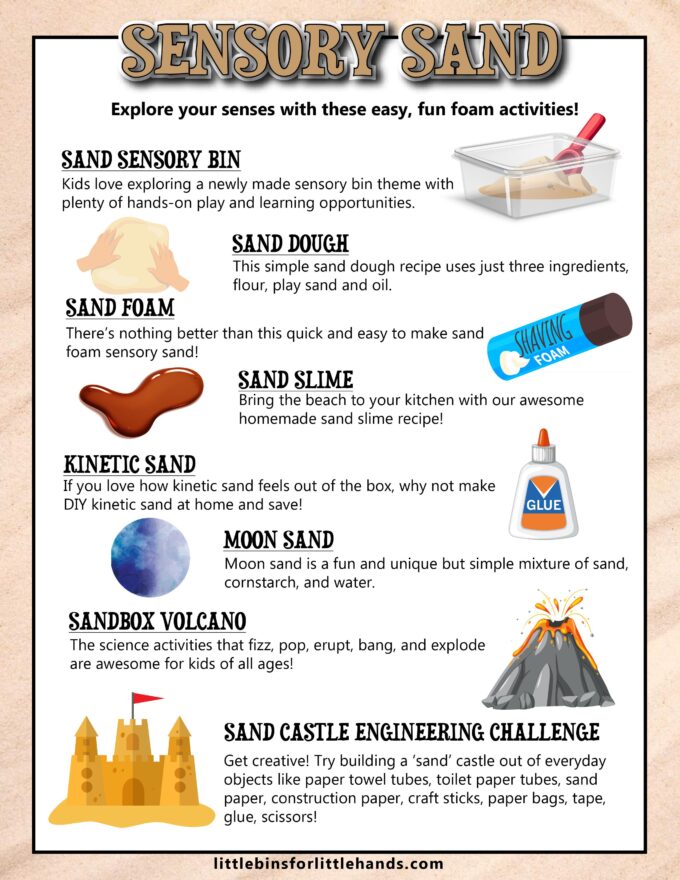Are you ready to embark on a sand-filled adventure? Sand is not just something you find at the beach; you can make your own sand right at home! In this guide, we will explore the wonders of sand and learn how to create different types of sand for playtime. So, get ready to unleash your creativity and have a great time with these amazing sensory materials!
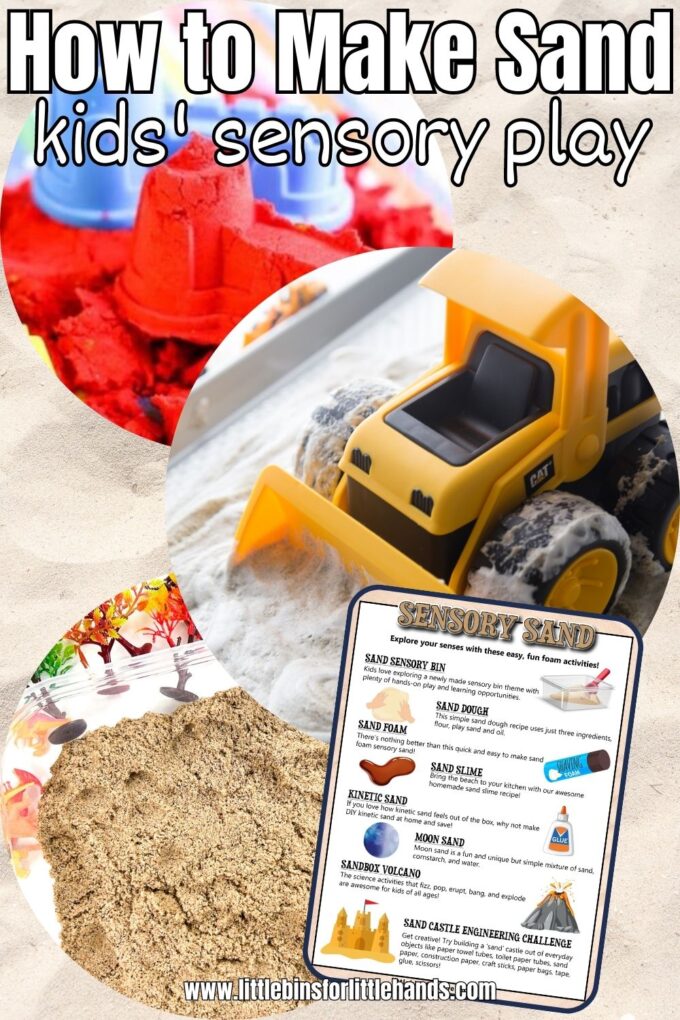
What is sand?
Before we dive into making sand, let’s understand what sand is.
Sand is a bunch of tiny grains that come from rocks and minerals. It feels soft and smooth to touch, making it perfect for sensory play and exploration. But did you know that there are different types of sand? Some are great for building castles, while others are fantastic for molding and shaping!
Add a lesson in sand science to your next Earth Science lesson plans!
What is sand made of?
Sand is primarily composed of sediments or small, loose grains of minerals, rocks, and organic materials. The most common mineral in sand is quartz, which is a hard, crystalline mineral made up of silicon and oxygen. However, sand can also contain other minerals such as feldspar, mica, olivine, and various types of rocks like limestone, basalt, and granite.
The color of the sand can vary depending on the minerals present, ranging from white to golden, black, or even green.
In addition to minerals and rocks, sand can also contain organic materials such as shell fragments, coral, and plant debris. When shells and coral break down over time, they contribute to the composition of sand, especially in coastal areas.
The size of the sand grains can vary from very fine, like the powdery sand found on some beaches, to coarser sand with larger grains. The formation of sand is a natural process that occurs due to weathering and erosion of rocks and minerals over millions of years.
Rivers, oceans, and wind play a significant role in transporting and depositing sand in various locations, creating the beautiful sandy landscapes we see today.
Sand grains under a microscope are beautiful. Not two grains are alike and the variety is different throughout the world!
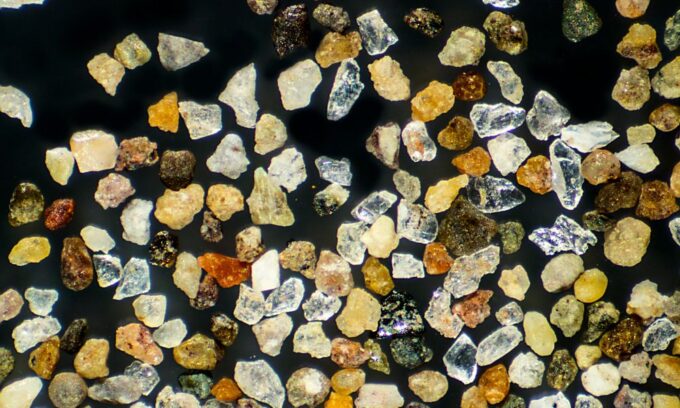
Is Sand a Sedimentary Rock?
While making and playing with sand, turn it into a geology activity and learn more about how sedimentary rocks are formed!
You just learned that sand is composed of tiny grains of minerals like quartz, feldspar, and other rock fragments. When these sand grains become compacted and cemented together, they form sedimentary rock known as sandstone. While sand itself is not a solid rock, it is a crucial component in forming sedimentary rocks, like sandstone.
What does sand classify as?
Sand is classified as a granular material. Granular materials are composed of individual particles or grains that are larger than molecules but smaller than a pebble. These particles have distinct boundaries and do not form a cohesive mass like a solid block. Instead, they can flow and move independently of each other.
Sand is considered a granular material because it is made up of small, discrete grains or particles of minerals, rocks, and organic materials. These individual grains of sand can be easily seen and felt, and they can flow and shift when poured or manipulated.
Granular materials, including sand, have unique properties that make them interesting for various scientific and engineering studies. They can exhibit behaviors such as flowing like a fluid when poured, forming piles or dunes, and experiencing compaction under pressure.
The study of granular materials is essential in fields like geology, civil engineering, and agriculture, and even in understanding natural phenomena like avalanches and landslides.
How to make your sand at home:
Sand is not just for the beach; you can have endless fun at home or in the classroom! From moldable play sand to magical moon sand and squishy sand slime, each type of sand offers a unique and exciting tactile sensory experience. So, grab your favorite materials and get ready for a sand-filled adventure that will spark your creativity and imagination!
Turn store-bought or homemade kinetic sand into a dinosaur sensory bin (or any theme)!
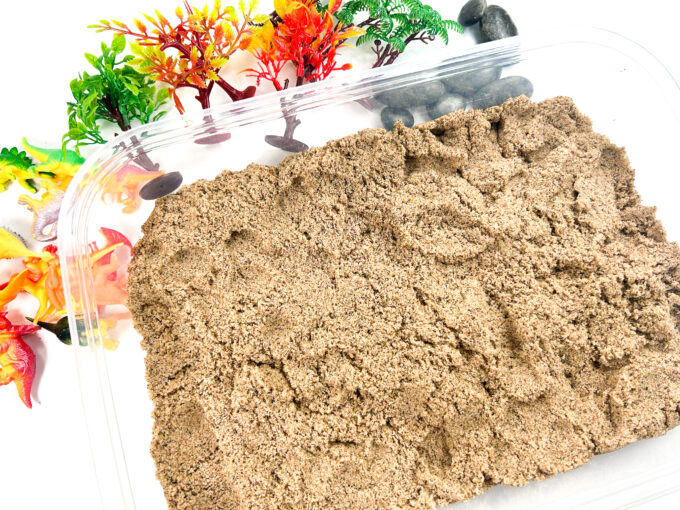
Sand Foam For Sensory Play: A great sensory recipe, there’s nothing better than this quick and easy-to-make sand foam sand!
Kinetic Sand Recipe: If you love how kinetic sand feels out of the box, why not make DIY kinetic sand at home and save! Kids love this type of play sand that moves and works magically for various ages.
How To Make Sand Slime: Bring the beach to your kitchen with our awesome homemade sand slime recipe! Whether you use sand from the beach, sandbox, or craft store, making slimy stretchy sand is sure to be a hit with the kids. This one makes for a great sensory experience!
Easy Moon Sand Recipe: Moon sand is one of our favorite sensory recipes to play with and make!
Sand Dough Recipe: This simple sand dough recipe uses just three ingredients, flour, play sand and oil for tonnes of hands-on fun for kids. Make your own sand dough sensory bin and explore geometric shapes for early learning.
Colored Kinetic Sand Recipe: Kinetic sand is so much fun for kids to play with, and what’s more, its super easy to make your own regular kinetic sand at home and save! Kids always love the vibrant colors of this sand!
Sandbox Volcano: While you wouldn’t use homemade sand for this science activity, it sure is fun to do in the sandbox. Try a sandbox volcano for baking soda and vinegar science.
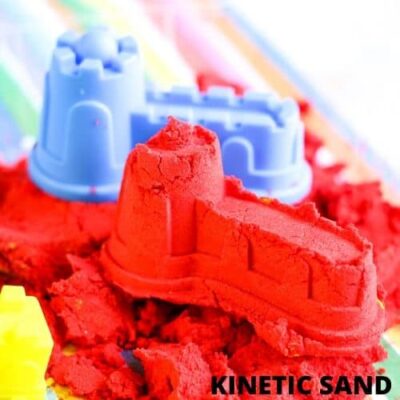
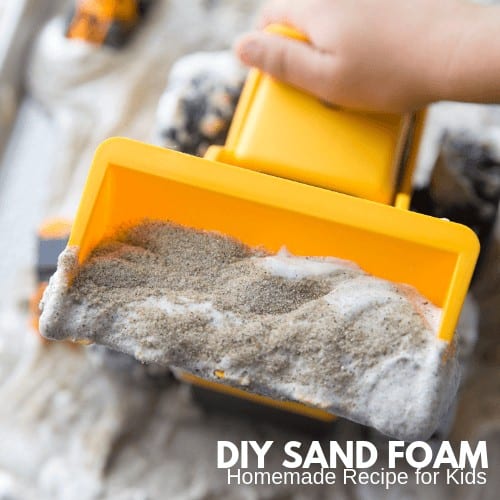
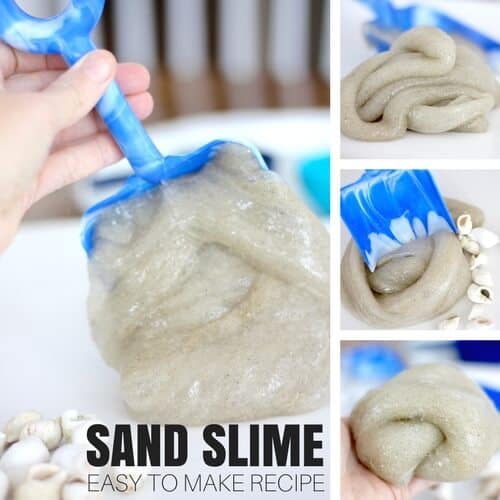
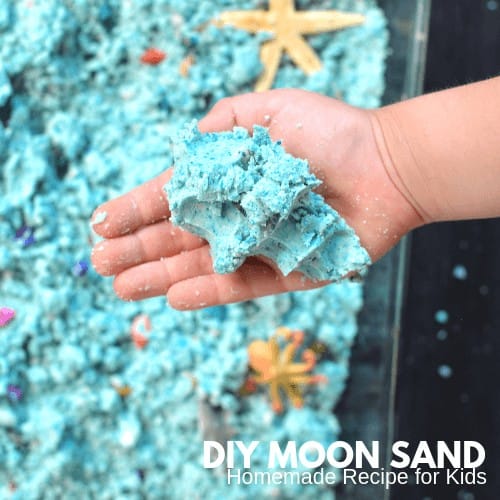

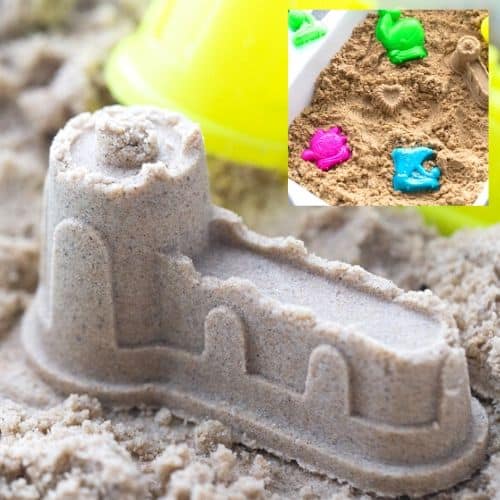
Storing Homemade Sand
Remember to keep your sand in an airtight container when you’re not playing to keep it fresh and ready for your next adventure, and it should last you a month or two!
Check the sand before you each use, especially if you have added food-grade ingredients such as flour, oil, and baking soda.
Whether you’re a young explorer or a seasoned sand artist, there’s a sand type for everyone to enjoy! Grab the free download below and save it for your next sand experience.


